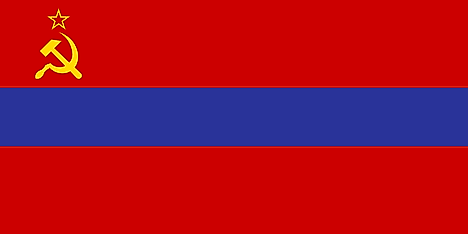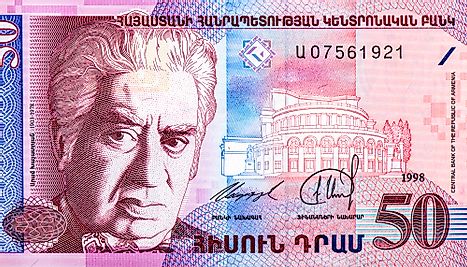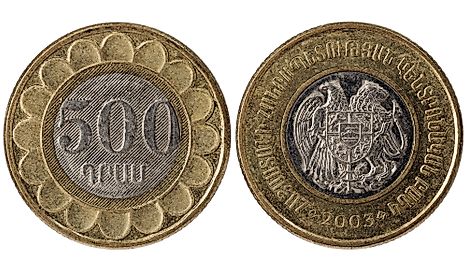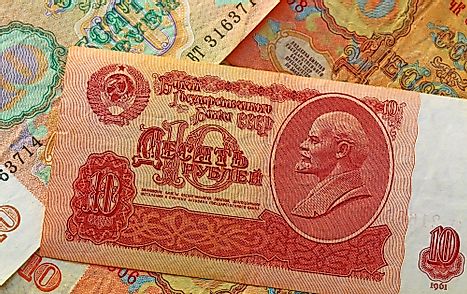Flags, Symbols & Currency of Armenia
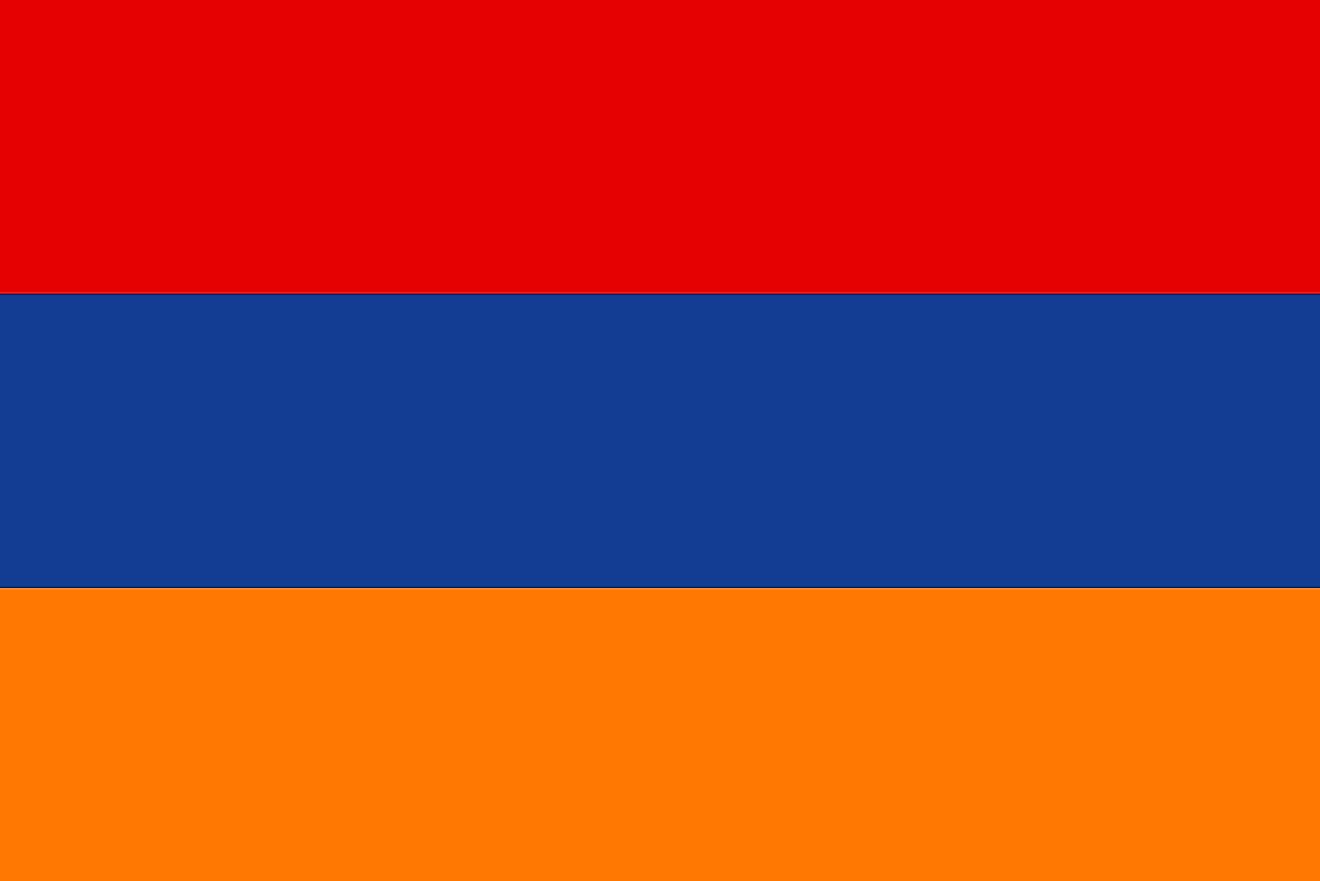
The National Flag of Armenia (The Armenian Tricolour) was officially adopted by the Supreme Soviet of the Republic of Armenia on August 24, 1990. The current flag was designed by Stepan Malkhasyants, an Armenian lexicographer, linguist, academician, and philologist.
The Flag is rectangular in shape and features three equal horizontal bands of equal thickness. The top stripe is red, the middle is blue, and the bottom is orange. The colors of the flag have various interpretations. As per the Constitution of Armenia, red signifies the highlands of Armenia and the people’s struggle to survive and maintain the Christian faith, as well as the country’s freedom and independence. Blue represents the will of Armenians to live under peaceful skies, while orange denotes the hardworking nature and creative talent of Armenian citizens. The flag has a height to length proportion ratio of 1:2.
History of the Armenian Flag
There have been several flags throughout Armenia’s history. In the past, various dynasties have adopted different flags in the Armenian empire. The Artaxiad Dynasty used the first flag between 189 BC and 1AD, comprising of three charges, and two eagles separated by a flower on a red cloth. Other dynasties that had flags in the Armenian Kingdom of Cilicia include Rubenid Dynasty (1198-1219), the Hethumid Dynasty (1226-1341), and the Lusignan Dynasty (1341-1375). The first modern flag was adopted in 1885 after the split of Armenia between the Ottoman and Persian Empires. In 1936, the Armenian SSR adopted its first flag, which resembled the Soviet Union’s flag. In 1952, a new flag was introduced, which added a blue fess to the preceding flag's design. After the collapse of the Soviet Union, Armenia gained its independence and the First Republic of Armenia adopted the current national flag; which was based on the colors used during the Lusignan period. The Armenian National Assembly passed a law governing the use of the flag on June 15, 2006.
Symbols of Armenia
National Coat of Arms of Armenia
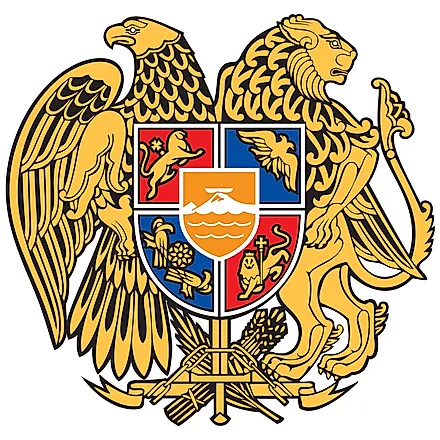
Armenia adopted its national coat of arms on April 19, 1992. It consists of an eagle and a lion holding onto a shield, with the shield itself being divided into five sections. The center section depicts Noah's Ark sitting on top of Mount Ararat, and within the surrounding sections are symbols of old Armenian dynasties (Bargratunides, Arshakounides, Artashesides, and Rubenides). Below the shield rest five elements: a sword (for power and strength), a broken chain (for independence), wheat (for their hard-working nature), a feather (for intellectual and cultural heritage), and a ribbon (for the flag). The Eagle and the lion are ancient Armenian symbols. Golden is the main color of the Armenian Coat of Arms and the foregoing colors emblematize the colors of the national flag.
National Motto
Մեկ Ազգ, Մեկ Մշակույթ ("Mek Azg, Mek Mshakouyt" ) [“ One Nation, One Culture”]
National Anthem
- Anthem Title: “Mer Hayrenik”/ “Our Fatherland”
- Music Composer: Barsegh Kanachyan
- Lyricist: Mikayel Nalbandian
- Date of Adoption: First adopted in 1918 and then re-adopted on July 1, 1991
The national anthem of Armenia is “Mer Hayrenik”/ “Our Fatherland”. Mikayel Nalbandian – an Armenian writer had penned the lyrics, with a Lebanese-Armenian composer, Barsegh Kanachyan composing the music. The national anthem was first adopted in 1918 and then modified and re-adopted on July 1, 1991, by the Supreme Soviet of the constituent Republic. Being intrinsic to civic education, the anthem prominently features in the classrooms of the schools in the country and this dignification of the national anthem encourages the students to sing it every day. The national anthem of Armenia also mentions the flag in the second and third stanzas, citing its creation.
Mer Hayrenik (Armenian)
Մեր Հայրենիք, ազատ անկախ,
Որ ապրել է դարեդար
Յուր որդիքը արդ կանչում են
Ազատ, անկախ Հայաստան։
Ահա եղբայր քեզ մի դրոշ,
Որ իմ ձեռքով գործեցի
Գիշերները ես քուն չեղայ,
Արտասուքով լվացի։
Նայիր նրան՝ երեք գոյնով,
Նուիրական մեր նշան
Թող փողփողի թշնամու դեմ
Թող միշտ պանծայ Հայաստան։
Ամենայն տեղ մահը մի է
Մարդ մի անգամ պիտ մեռնի,
Բայց երանի՝ որ յուրր ազգի
Ազատության կը զոհվի։
Our Fatherland
Our Fatherland, free, independent,
That has for centuries lived,
Is now summoning its sons
To the free, independent Armenia.
Here is a flag for you, my brother,
That I have sewn by hand
Over the sleepless nights,
And bathed in my tears.
Look at it, tricolored,
A valuable symbol for us.
Let it shine against the enemy.
Let you, Armenia, be glorious forever.
Death is the same everywhere,
A man dies but once,
Blessed is the one that dies
For the freedom of his nation.
The Currency of Armenia is the Armenian dram
The official currency of Armenia is the “Armenian dram”. The term "dram," when translated into English, means "money.” It stands cognate with dirham in Arabic as well as drachma in Greek, and one dram is made up of has 100 luma. The Armenian dram is denoted as AMD in the international format.
The Armenian dram also enjoys circulation in the Nagorno-Karabakh Republic.
Coins
The inaugural series of the currency coins circulated from 1994 to 2002. The aluminum coins featured denominations of 1, 3, 5, and 10 drams in addition to 10, 20, and 50 luma. The 10-dram coin is the only one currently in use. Although the other denominations circulate officially, they are hardly used due to their low nominal value. New denominations were released in 2003 and 2004 made up of 10, 20, 50, 100, 200 as well as 500-dram coins. Printed on the coins is the particular year they were first initially rolled out.
Banknotes
The introductory series of the dram's banknotes were rolled out in November 1993. The notes consisted of the denominations 10, 25, 50, 100, 200, as well as 500 dram. Banknotes for 1000 and 5000 dram were subsequently released. The series was withdrawn by 2006. Notes of 50, 100, and 500 drams are barely used and are thus scarcely in circulation. In the notes’ place, 50, 100, and 500-dram coins are preferred. On June 4, 2001, a 50,000-dram note was dispensed to commemorate the 1700th anniversary of the acceptance of Christianity in the nation. The new banknotes boast a higher protection level than that of the earlier notes. The current banknotes of the dram are designed by experts drawn from England and Germany.
The nation's noted artists and scientists and historical and cultural monuments, as well as the beautiful fragments of paintings by the great Armenian painter – Martiros Sarian, have been drawn on the Armenian banknotes.
Historical Currencies of Armenia
The pre-history of a dram currency dates back to 1199 to 1375, a period during which silver coins referred to as dram circulated. After Armenia became a republic in September 1991, the newly created Central Bank of Armenia was granted the crucial mandate on March 27, 1993, to issue the national currency. Several states cooperated to found a confederation dubbed the Commonwealth of Independent States (CIS) after the fall of the Soviet Union. CIS countries supported the introduction and circulation of the Russian ruble as a unified currency. Armenia joined the confederation, but the uncertain economic and political situation made it problematic to sustain a common currency. The 1993 Russian monetary reform triggered the collapse of the ruble zone. The rest of the CIS states had no other choice but to introduce individual currencies. On November 22, 1993, Armenia made monetary strides by issuing the dram.
